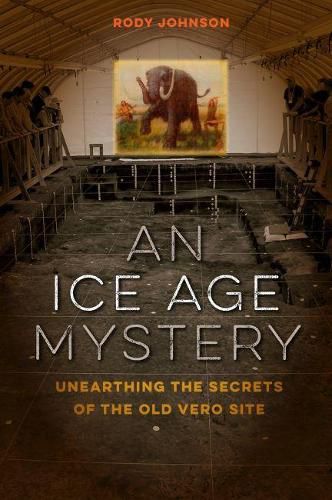Readings Newsletter
Become a Readings Member to make your shopping experience even easier.
Sign in or sign up for free!
You’re not far away from qualifying for FREE standard shipping within Australia
You’ve qualified for FREE standard shipping within Australia
The cart is loading…






This title is printed to order. This book may have been self-published. If so, we cannot guarantee the quality of the content. In the main most books will have gone through the editing process however some may not. We therefore suggest that you be aware of this before ordering this book. If in doubt check either the author or publisher’s details as we are unable to accept any returns unless they are faulty. Please contact us if you have any questions.
Did humans live in Florida during the Ice Age?
In 1916, to the shock of the science world, a Florida geologist discovered human remains mixed with the bones of prehistoric animals in a Vero Beach canal and proclaimed that humans had lived in North America since the Ice Age. Elias Sellards’s findings flew in the face of prevailing wisdom, which held that humans first came to the continent only 6,000 years ago. His claim was snubbed by the top scientists of his day; he was laughed out of the state; and the skull he found-famously known as Vero Man -was lost.
An Ice Age Mystery tells the story of Sellards’s exciting find and the controversy it sparked. In the years that followed, other archaeological discoveries and the rise of radiocarbon dating established that humans did arrive in North America earlier than previously thought, and many people began to wonder: what exactly had Sellards found at Vero? And what else might be buried there?
One hundred years after the first Vero discovery, construction plans threatened to cover up the legendary dig site and a band of citizens and archaeologists protested. Excavations were reopened. Archaeologists uncovered 14,000-year-old burnt mammal bones and charcoal, signs of a human presence, and further found evidence to indicate a continuous human occupation of the site for over several thousand years. Sellards had been right all along.
As the dig continues today, questions remain. Who were these people? Where did they come from? And how did they get here? This book draws readers into the past, present, and future of one of the most historic discoveries in American archaeology.
$9.00 standard shipping within Australia
FREE standard shipping within Australia for orders over $100.00
Express & International shipping calculated at checkout
This title is printed to order. This book may have been self-published. If so, we cannot guarantee the quality of the content. In the main most books will have gone through the editing process however some may not. We therefore suggest that you be aware of this before ordering this book. If in doubt check either the author or publisher’s details as we are unable to accept any returns unless they are faulty. Please contact us if you have any questions.
Did humans live in Florida during the Ice Age?
In 1916, to the shock of the science world, a Florida geologist discovered human remains mixed with the bones of prehistoric animals in a Vero Beach canal and proclaimed that humans had lived in North America since the Ice Age. Elias Sellards’s findings flew in the face of prevailing wisdom, which held that humans first came to the continent only 6,000 years ago. His claim was snubbed by the top scientists of his day; he was laughed out of the state; and the skull he found-famously known as Vero Man -was lost.
An Ice Age Mystery tells the story of Sellards’s exciting find and the controversy it sparked. In the years that followed, other archaeological discoveries and the rise of radiocarbon dating established that humans did arrive in North America earlier than previously thought, and many people began to wonder: what exactly had Sellards found at Vero? And what else might be buried there?
One hundred years after the first Vero discovery, construction plans threatened to cover up the legendary dig site and a band of citizens and archaeologists protested. Excavations were reopened. Archaeologists uncovered 14,000-year-old burnt mammal bones and charcoal, signs of a human presence, and further found evidence to indicate a continuous human occupation of the site for over several thousand years. Sellards had been right all along.
As the dig continues today, questions remain. Who were these people? Where did they come from? And how did they get here? This book draws readers into the past, present, and future of one of the most historic discoveries in American archaeology.